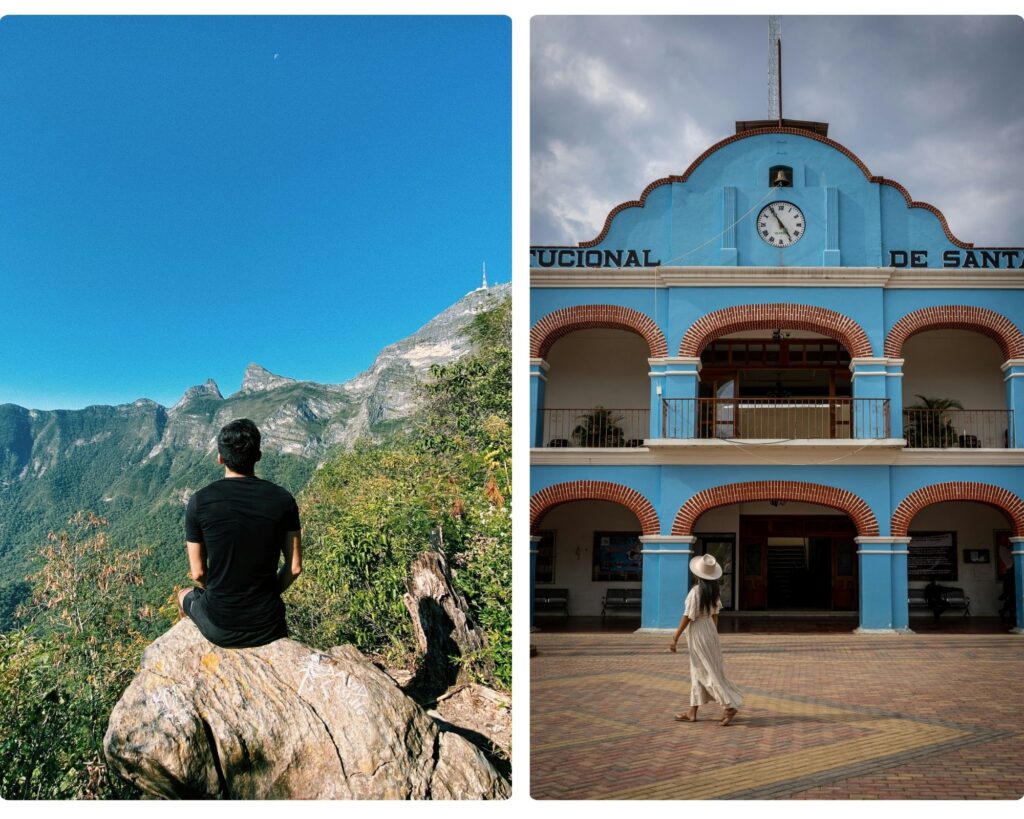How to study in Mexico as an international student?
Study in Mexico as an international student, learn about student visas, step-by-step instructions, and more.
Mexico has become an increasingly popular destination for international students, thanks to its rich culture, strategic location, and high-quality educational institutions at all levels. The country also offers a wide range of programs for those seeking a comprehensive and well-rounded education. However, to get started, it’s important to understand how the education system works, the requirements for studying, and the steps needed to successfully integrate into the academic environment. This guide will help you navigate everything you need to know to study in Mexico as an international student.
Throughout this article, you’ll find clear and concise information to help simplify your journey, from understanding the education system to starting your academic term.
If you’re planning a longer stay in Mexico, we recommend using Holafly’s monthly subscription plans to stay connected at all times while traveling and studying.
If your stay is short-term, Holafly’s eSIM for Mexico is a much more convenient option, providing unlimited data without roaming charges for the exact number of days you’re in the country.
How does the education system work in Mexico?
Mexico’s education system is diverse and accessible, providing opportunities at every level, from primary education to graduate programs. Overall, it is structured as follows:
- Basic and upper secondary education:
- Basic education includes primary school (six years) and secondary school (three years).
- Upper secondary education, known as high school, lasts three years and is a requirement for admission to higher education.
- Higher education:
- Bachelor’s degree: Undergraduate university programs typically last between four and five years, depending on the field of study.
- Master’s degree: Graduate programs last between one and two years.
- Doctorate: These generally require an additional three to five years.
- Technical options and specialized courses: In addition to universities, Mexico has technical institutes and specialized schools that offer short programs focused on specific fields such as technology, gastronomy, or business.
- Public and private universities: Mexico has internationally recognized public universities, such as UNAM and IPN, which are both high-quality and affordable. It also has prestigious private institutions like the Tecnológico de Monterrey and Universidad Iberoamericana.
Requirements for studying in Mexico as a foreigner
If you plan to study in Mexico as an international student, it’s important to meet certain key requirements to secure your admission and legal stay in the country. Here’s what you need to know:
- Valid passport: Make sure it is valid for at least six months from the date of entry into Mexico.
- Student visa: Required for programs lasting more than 180 days; must be obtained from the Mexican consulate in your country of origin.
- Letter of acceptance: Issued by the educational institution confirming your admission to the study program.
- Proof of financial solvency: Proof of income or bank statements showing that you can cover tuition, housing, and other expenses during your stay.
- International health insurance: Coverage for the entire period of study.
- Academic documents: Diplomas, certificates, or previous degrees, duly apostilled and translated into Spanish if they are in another language.
- Language certification: For Spanish-language programs, some institutes may require tests such as DELE or SIELE.
- Multiple immigration form: A document you will receive upon entering Mexico that you must keep for the duration of your stay.
Meeting these requirements will allow you to begin your academic experience in Mexico without any problems.
Steps to study in Mexico as a foreigner
Studying in Mexico as an international student can be a highly rewarding experience, but it takes careful planning. From choosing the right school to handling immigration requirements, each step matters to ensure your experience goes smoothly. Here’s a guide to the key steps you’ll need to take.
1. Evaluate universities and courses in Mexico
Choosing the right university and program in Mexico is a crucial step for ensuring a successful academic experience. This involves researching your options thoroughly and considering several key factors:
- Prestige and accreditation: Make sure the university is recognized by Mexican educational authorities and that the program is accredited. Some of the most notable institutions include UNAM, ITESM, and Universidad de Guadalajara.
- Academic offerings: Look for programs that match your personal and professional goals. Mexico offers a wide range of courses, from the sciences to arts and humanities.
- Location: Think about the city where the university is located. Factors like cost of living, climate, and job opportunities can all influence your decision.
- Costs and scholarships: Check tuition fees and related expenses, as well as the availability of scholarships or financial aid for international students.
- International reputation: Some Mexican universities have partnerships with foreign institutions, which can make it easier to access exchange programs or earn dual degrees.
2. Review financing options in Mexico
Studying in Mexico as an international student can be costly, but there are several financing options that can help make your academic experience more manageable. Here are some alternatives:
- Government scholarships: The Mexican government offers scholarship programs for international students, such as those managed by the Ministry of Foreign Affairs. These scholarships often cover tuition, living expenses, and sometimes even transportation.
- University scholarships: Many Mexican universities have dedicated financial support programs for international students. Check the websites of institutions like UNAM or Tecnológico de Monterrey to learn about their requirements and benefits.
- Educational loans: There are financial institutions, both in Mexico and abroad, that offer student loans at favorable rates. Make sure to review the terms carefully and consider whether this option is suitable for your situation.
- Sponsorships: Some international organizations and foundations support students studying in Mexico in exchange for academic or community commitments.
- Work-study programs: Some universities allow international students to work on campus to help cover part of their expenses.
3. Apply to a study program in Mexico
The application process for a study program in Mexico varies by institution, but it generally involves several key steps that you need to follow carefully to secure your admission.
Start by exploring the academic programs offered by Mexican universities that match your interests and career goals. Well-known institutions such as the Universidad Nacional Autónoma de México (UNAM), the Instituto Politécnico Nacional (IPN), and the Tecnológico de Monterrey offer a wide range of undergraduate, master’s, and doctoral programs.
Carefully review the admission requirements for the program you choose. You’ll typically need to submit academic transcripts, recommendation letters, personal essays, and in some cases, a portfolio or entrance exams. Make sure any documents from abroad are translated and officially certified.
Additionally, many Mexican universities require proof of Spanish proficiency, such as the SIELE or DELE exams, although some programs are offered in English.
Submit your application online or by mail according to the university’s instructions. Keep an eye on deadlines, as the review process can take several weeks or even months.
4. Apply for a visa to study in Mexico
Getting a student visa for Mexico is an essential step for anyone planning to study in the country. This process ensures you can stay legally for the duration of your academic program.
The first step is to determine which type of visa you need. Mexico offers a Temporary Resident Student Visa for those planning to study for more than six months. For shorter programs, you might enter as a tourist, but it’s important to check the specific restrictions for each case.
When applying for a student visa, you’ll need to provide key documents such as your valid passport, an acceptance letter from the university, and proof that you can cover your expenses or have funding like a scholarship. You’ll also need to complete the application form, and in some cases, submit a recent photo and pay the consular fee.
The application must be submitted at the Mexican consulate in your country of residence. It’s best to start the process well in advance, as it can take several weeks. Once approved, you’ll need to complete your immigration registration upon arrival in Mexico.
5. Moving to Mexico
Studying in Mexico is an exciting adventure, but it takes some planning. Once your student visa is approved and your enrollment is confirmed, it’s time to think about the move. Finding a place to live is the first step. You could choose a student residence, rent your own apartment, or share housing with other students, depending on your budget and preferences. It’s smart to look for housing near your school to cut down on commuting time. Online listings, social media groups, and local real estate agencies are all useful resources for finding safe and affordable options.
Pack only the essentials and check Mexico’s customs regulations to make sure everything you bring is allowed. Don’t forget important documents like your passport, visa, acceptance letter, medical records, and insurance copies.
Once you arrive, take time to get familiar with public transportation, essential services, and the local culture. Mexico is a welcoming and diverse country, but understanding local customs and rules will help you settle in more smoothly. You might also consider opening a local bank account and getting a phone plan to make everyday life easier. Planning these details ahead of time will help your move go more smoothly and let you fully enjoy this new academic and cultural experience.
How much does it cost to study in Mexico as a foreigner?
The cost of studying in Mexico as an international student can vary depending on the city, institution, and level of study. Mexico is known for providing high-quality education at relatively affordable prices compared to other countries, along with a moderate cost of living. Here’s a breakdown of some of the main expenses you should consider.
1. Accommodation for foreign students in Mexico: On average, renting an apartment in cities like Mexico City, Monterrey, or Guadalajara can cost between $200 and $600 per month, depending on the location and size. Student residences are usually more affordable, ranging from $175 to $350 per month. A common alternative is sharing an apartment, which can significantly lower costs.
2. Transportation as a foreigner in Mexico: Public transportation in Mexico is affordable and efficient in most major cities. A metro or bus ticket costs around $0.25 to $0.50. There are also monthly student passes that range from $5 to $20. If you plan to use taxis or ride-sharing services like Uber, costs can be higher depending on how often you travel and the distances covered.
3. Food as a foreigner in Mexico: Food costs will depend on your habits. Eating at inexpensive restaurants can range from $4 to $10 per meal. On the other hand, shopping at supermarkets and cooking at home is more budget-friendly, with an average monthly expense of about $75 to $150.
4. Careers and courses in Mexico: Public universities in Mexico, such as UNAM or IPN, charge very low fees for local students, but international students usually pay more, ranging from $1,000 to $4,000 per year. At private universities, tuition is higher, typically between $5,000 and $15,000 per academic year. Short courses or certificate programs vary from $250 to $2,500, depending on the program.
5. Other expenses in Mexico: Also factor in the cost of books and materials, which can range from $50 to $150 per semester, student health insurance (required at many institutions, starting around $100 per year), and recreational activities.
Overall, studying in Mexico as an international student is a cost-effective choice compared to many other countries. Mapping out a clear budget can help you make the most of your resources.

When and how to get degrees and courses recognized in Mexico?
Degree recognition is an important step for anyone looking to continue their studies in Mexico. This process ensures that the Mexican education system acknowledges qualifications earned abroad, allowing students to join the appropriate level of study.
When do I need to get my degree recognized?
You must get your degree recognized when:
- You want to enroll in a Mexican institution to continue your upper secondary or higher education.
- You plan to validate previous courses to advance in a degree program or course of study.
- You aspire to work in a professional field that requires a license issued by Mexican authorities.
How is the certification process carried out?
- Check the specific requirements: Different education levels and programs follow their own procedures. Be sure to reach out to the Ministry of Public Education (SEP) or your school to get the full details.
- Gather the necessary documentation: You’ll typically need to provide your original degree, transcripts, and detailed course outlines or syllabi. All documents must be officially certified or legalized in your home country.
- Translate the documents: If the documents are in a language other than Spanish, they must be translated by a certified translator.
- Submit the application: You’ll need to submit your degree recognition request to the General Directorate for Accreditation, Incorporation, and Revalidation (DGAIR) or the relevant local authority.
- Pay the applicable fees: Costs vary depending on the level of education and the complexity of the process.
- Wait for the decision: The response time can take between 30 and 90 days.
This process may seem complex, but it is essential to ensure the validity of your studies in Mexico.
Important: If you are a frequent traveler and want to stay connected without worrying about expensive roaming or looking for a new SIM at every destination, Holafly’s subscription plans are for you. With a single eSIM, enjoy internet in more than 170 countries for a fixed price and no surprises on your bill. Travel without limits and connect easily and securely! 🚀🌍

Studying online in Mexico as a foreigner
With the growing popularity of online learning, studying in Mexico has become more accessible than ever. Many Mexican universities now offer virtual degree programs and courses that let international students earn a quality education from anywhere in the world.
Virtual course options
- Mexican universities: Universities like UNAM, Tec de Monterrey, and UDG offer fully online bachelor’s, master’s, and diploma programs. These courses are designed with flexibility in mind, allowing students to balance their schedules while still receiving a top-quality education.
- Learning platforms: Platforms like Coursera, edX, and Crehana partner with Mexican universities to offer specialized courses in fields such as business, technology, and the arts.
Advantages of studying online in Mexico
- Flexibility: You can combine your studies with other activities or jobs, as schedules are usually flexible.
- Global access: It doesn’t matter where you are, as long as you have an internet connection.
- Reduced costs: Online programs are usually more affordable than on-campus ones, since you won’t have to worry about extra costs like housing or transportation.
Steps to access online courses in Mexico
- Research the universities and programs that interest you.
- Check the enrollment requirements.
- Complete the online admission process by providing documents such as previous academic transcripts and valid identification.
- Pay the corresponding fees.
- Access the digital platforms to begin your studies.
Studying online with a Mexican university lets you access quality education without having to move there, making it a great option if you’re looking for flexibility and lower costs.

Frequently asked questions about studying in Mexico as an international student
Yes, most universities in Mexico teach their programs in Spanish, though some private institutions also offer courses in English, particularly in fields like business and technology.
We recommend starting at least six months before the program begins in order to complete requirements such as degree recognition, enrollment, and visa applications.
With a student visa, you’re not allowed to work legally in Mexico. However, some universities allow students to participate in internships or practical training opportunities under certain approved conditions.
Yes, many Mexican universities and organizations offer scholarships for international students, such as those from the National Council for Science and Technology (CONACYT) or the Ministry of Foreign Affairs (SRE).
You can use platforms like Airbnb, social media, and student-focused websites to find housing. You can also reach out to your university’s housing office for suggestions.
You should report the loss immediately to the Mexican immigration authorities and request a replacement by following the official procedures.





 Language
Language 


















 No results found
No results found







